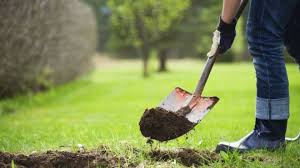Basal metabolic rate is the most catchy term as far as weight loss is concerned.It refers to the energy required by an individual in unit time, to keep the body functioning at rest. In simpler terms, it refers to the energy expended by an average male or female when at rest for all the physiological processes like breathing, heart pumping blood, temperature regulation, kidneys filtering and eliminating waste etc. This is approximately 1400 calories in a woman who is near normal weight for a day. For a male it is about 1800 calories under the same conditions. This is approximately 70-80% of the total energy burned everyday. The formula for calculation of BMR is called The Harris Benedict formula. It takes into account the height weight and age of the person. There are many other formulas that use the lean muscle mass for calculation. One example is the Katch McArdle equation.
The metabolic age is a new term used in the health and wellness industry. This gives the individual a fair idea of the level of health of an individual depending on the BMR. If the metabolic age of the individual is lesser than the actual age, then the person is in the pink of health. If it is higher, it means that the body has aged further than the actual age and interventions in nutrition and physical activity are essential. This is calculated by comparing the persons BMR with averages in the same chronological age group.
The basal metabolic rate depends on factors such as age, height , weight and gender. Taller and heavier individuals have a larger BMR, since the body mass is more and the organ sizes are larger and more calories are required to maintain them. Metabolism slows down as people age and it is well known that the lean body mass declines by 3-5 % every decade after 30 years of age. Hence extra effort is necessary after the age of 30 to maintain the BMR and indirectly the weight.
There are ways by which the BMR can be raised in order that the body expends more energy even while sleeping.
Weight training or lifting weights at home, eating proteins, getting 6-8 hours sleep in the night- all these help in increasing the BMR.
Though the basal metabolic rate is dépendent on factors such as height, weight, age etc, those that are interested in maintaining a high BMR should focus on maintaining the lean muscle mass. This is not an easy job considering that weight loss can result in loss of lean muscle mass. This loss of weight is detrimental to health. Loss of lean muscle mass leads to increased blood sugar levels and worsening of diabetes. The constant effort to maintain and increase the muscle mass should be a priority to anyone who wants to maintain an ideal weight and good health. Not only this, working on increasing muscle mass creates space for occasional indulgences- weekend dinners and parties. Therefore when contemplating weight loss, more focus is to be given to maintaining and increasing the prevalent muscle mass at the cost of fat loss.
For losing weight, a knowledge about the person’s BMR and activity level are essential for planning a weight loss diet. Every person dreams to have a perfect ten figure. This is one of the most daunting jobs especially in the case of women. The phases of menarche, marital life, pregnancy, recurrent childbirth and lactation, menopause-all these takes a toll on the health and increases the health risks in women.Indian women err in the period of pregnancy and lactation and treat it as a pathology with unlimited intake of food and meagre activity. This leads to a loss of lean body mass. Also wrong postnatal practises paralyse the abdominal muscles and leads to complete loss of tone. all these mistakes lead to a loss of lean muscle mass and a buildup of fat which compromises the wellness of the womenfolk
Strongly recommended is household jobs that put the muscles to work, such as shovel and dagger work, scrubbing floors and tiled walls, mopping floors in the squat and bent posture with a straight back etc. These help in maintaining the BMR as age catches up and helps with weight management.

